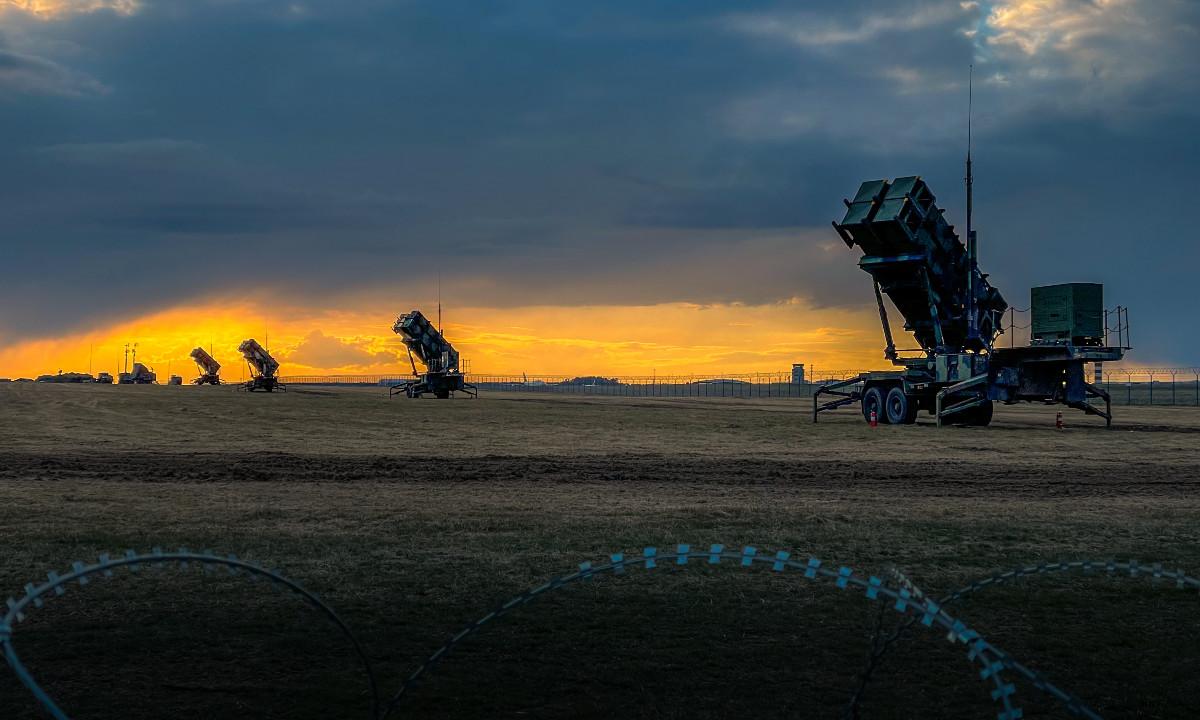HYPERSONIC HYPE? RUSSIA’S KINZHAL MISSILES AND THE LESSONS FOR AIR DEFENSE
Peter Mitchell | 05.23.23
The May 4 interception of a Russian Kinzhal hypersonic missile by one of Ukraine’s Patriot air defense systems in Kyiv has caused a significant stir in the international missile defense community. The ensuing saturation attack against Kyiv on May 16, which according to Russian sources was specifically aimed at knocking out a Patriot system, has only further underscored the significance of advanced missile defense systems in today’s evolving security landscape. This dramatic first-ever engagement between modern Western air defense systems and the hypersonic weapons specifically designed to defeat them was marked by contrails streaking the skies over Ukraine, literally and figurately underlining the significance of this latest technological revolution.
The Kinzhal: Overhyped and Underperforming
The Kh-47 Kinzhal (Russian for “Dagger”) air-launched missile, first unveiled in 2018, has been described by Russian state media as a “uniquely capable” next-generation hypersonic weapon capable of penetrating any and all enemy air defense systems and hit London in nine minutes. Hypersonic weapons are generally defined as long-range, maneuvering, air-breathing systems that travel in excess of Mach 5. The Kinzhal is reported to have a range of around 1,500 kilometers (930 miles), which is relatively short for a hypersonic missile, especially one benefiting from the increased range that comes from being launched from an aircraft. For context, the US Army’s Long-Range Hypersonic Weapon currently in development has a planned unclassified range of 1,725 miles. Hypersonic missiles typically employ a scramjet engine or other advanced propulsion to allow for maneuverability while maintaining hypersonic speed. The Kinzhal instead uses a solid-fuel rocket engine, likely derived from the SS-26 Iskander, which—like most solid rockets—likely can’t be shut down or throttled in flight. Once the rocket motor has burnt out, the missile then coasts to its target. This raises significant doubts about whether the Kinzhal can actually maintain a sustained speed of Mach 10 throughout its flight as Russians has claimed. Air resistance would slow the Kinzhal down just as it reaches the most critical, terminal stage of its attack, leaving it vulnerable to interception. This propulsion method and meager reaction control systems along with the sheer mass of the missile (approximately one thousand kilograms) raises questions about its actual agility and maneuvering capabilities. The missile is not capable of making sharp turns or rapid changes in direction, which is a critical aspect that makes hypersonic weapons so potentially difficult to intercept. In terms of maneuverability, the Kinzhal is more akin to a giant lawn dart loaded with explosives.
With this technical analysis in mind, it appears the Kinzhal is likely to join the Su-57, T-14 Armata, and BMPT Terminator in the dustbin of vaunted Russian weapons that have severely underperformed on the battlefield.
Saturation Attack: The Patriot’s Worst-Case Scenario
The truly impressive takeaway from the Patriot systems in Ukrainian service is not the singular takedown of the first Kinzhal but the Patriot’s performance under saturation bombardment. The May 16 air raid on Kyiv featured every category of long-range precision munition in the Russian arsenal: unmanned aerial vehicles as well as cruise, ballistic, and hypersonic missiles were all used in a coordinated saturation attack intended to overwhelm Ukrainian air defenses and destroy their systems. The saturation attack works through filling the three-dimensional airspace with more incoming targets than the defense can handle using a combination of land-, sea-, or air-launched missile platforms, a coordinated impact time, varied altitudes and azimuths of approach, decoys and countermeasures, and sheer numbers.
The ability of the Patriots donated by the United States and Germany to detect, track, and defeat this saturation attack coming from all different directions showcases the impressive advancements and upgrades that the venerable system has experienced since the Patriot was first updated for use against tactical ballistic and cruise missiles in the 1990s after its less-than-impressive showing against those threats during the Gulf War. Modern air defense systems have never faced a threat on the level of the current Russians air raids against Ukraine. Even during the height of the 2003 invasion of Iraq, around twenty-three ballistic missiles were fired against coalition forces, of which only nine were deemed targets for interception. The Ukrainian success in utilizing Patriot systems to counter a saturation attack from modern weapons from a near-peer enemy demonstrates the remarkable evolution of defense technology and its ability to adapt to emerging challenges.
Strategic Implications
The interception serves as a reminder of the growing importance of robust defense capabilities in an era of evolving threats. As nations around the world invest in the development of unmanned aerial vehicles, cruise missiles, ballistic missiles, and hypersonic weapons, the need for effective missile defense systems becomes even more crucial. These recent successful interceptions underscore the necessity for partner nations to continually enhance their air defense capabilities to counter advanced threats. Additionally, it is vital to not allow the recent successes over Kyiv to create complacency in the missile defense community. Policymakers cannot afford the luxury of assuming future hypersonic missiles will be plagued by as corrupt and inept a development as the Kinzhal.
As noted previously, the donation of Patriot systems to Ukraine was only the beginning of increasing strategic integration of Ukrainian and NATO forces. As the war rages on, increasingly capable offensive weapons such as long-range cruise missiles with stealth capabilities are being delivered as well as training Ukrainian pilots on F-16 fighters. This month’s attacks have firmly reestablished Western military technology, doctrine, and missile defense as a formidable force capable of countering sophisticated threats. It has also shown that NATO must continue to reassess their defense strategies, placing a renewed emphasis on developing and acquiring advanced missile defense systems. The performance of the Patriot and IRIS-T in Ukraine will lead to a strategic reevaluation by other nations of their offensive arms programs designed to defeat these systems, potentially reshaping dynamics not only in Eastern Europe, but around the world. This advantage, like all technological advantages, is only kept as long as innovative processes are encouraged by the West. As the proliferation of effective small unmanned aircraft systems has shown, the United States and its allies could just as quickly lose their edge in the missile defense sphere.
Capt. Peter Mitchell is an air defense officer and strategic studies instructor at West Point.
The views expressed are those of the author and do not reflect the official position of the United States Military Academy, Department of the Army, or Department of Defense.

Hypersonic Hype? Russia’s Kinzhal Missiles and the Lessons for Air Defense - Modern War Institute
The May 4 interception of a Russian Kinzhal hypersonic missile by one of Ukraine’s Patriot air defense systems in Kyiv has caused a significant stir in the international missile defense […]
 mwi.usma.edu
mwi.usma.edu










